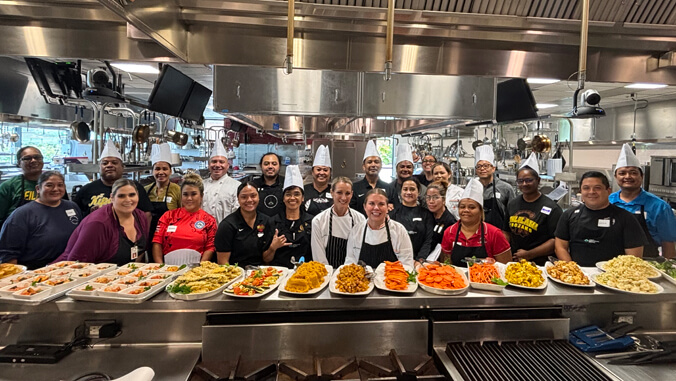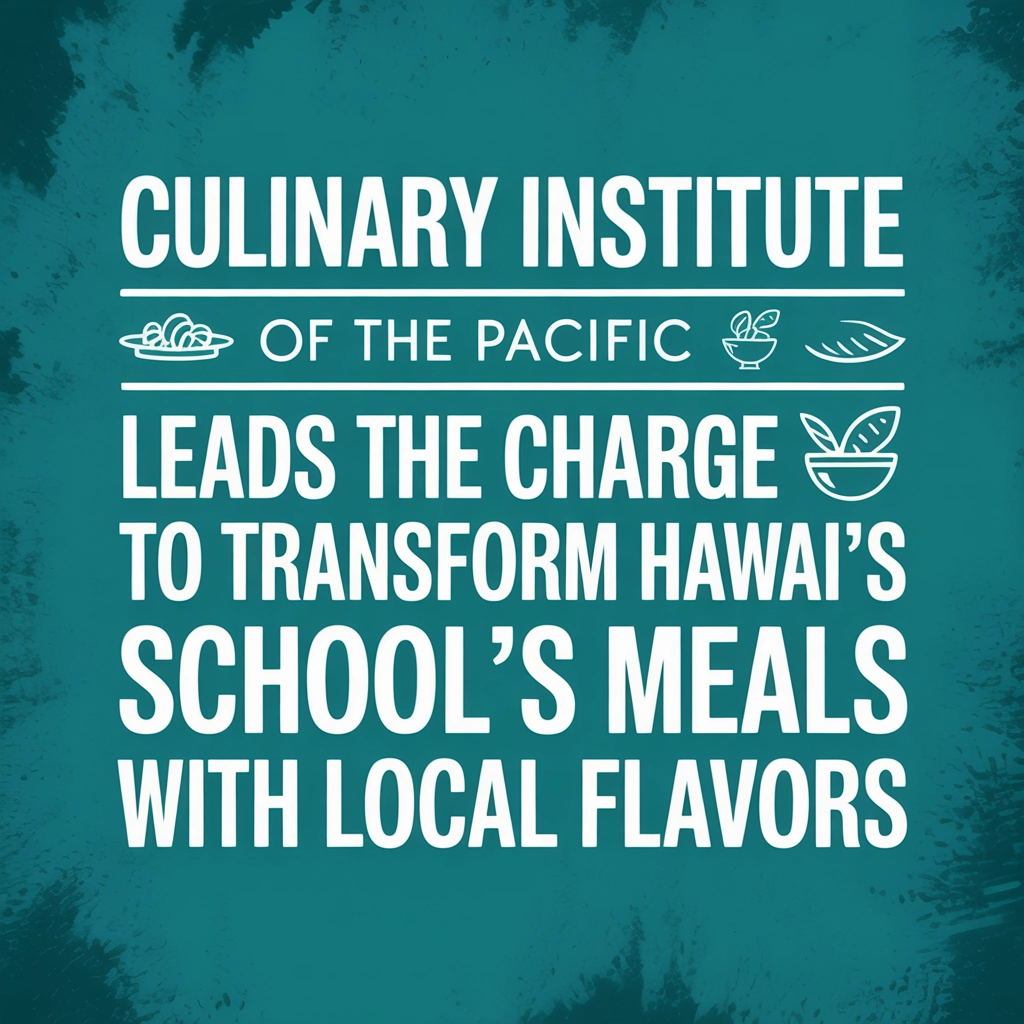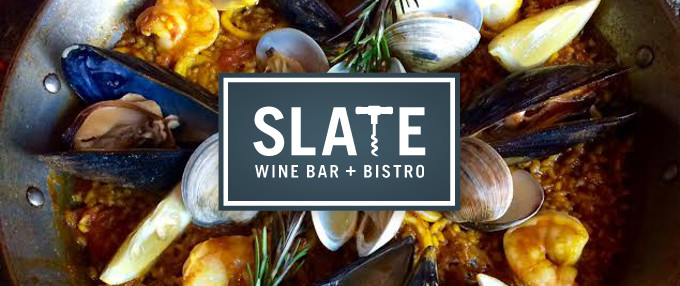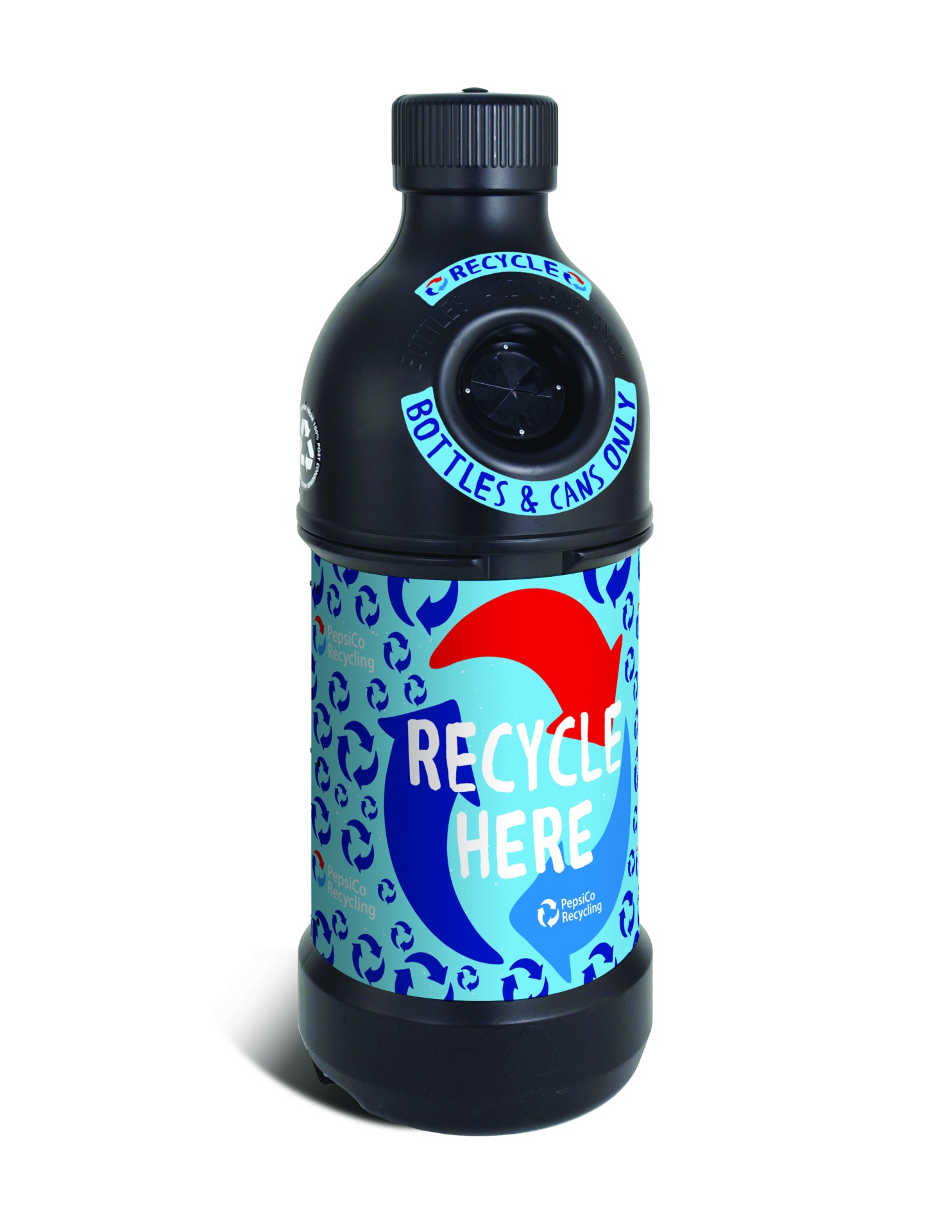Reimagining the School Cafeteria: Where Local Flavors Meet Nutrition
The cafeteria line of the future in Hawaiʻi's public schools won't look like the institutional food service many of us remember. Gone are the days of mystery meat and canned vegetables. Instead, students will soon enjoy fresh poke bowls featuring locally caught fish, vibrant salads harvested from island farms, and culturally significant dishes that honor Hawaiʻi's diverse culinary heritage.
This transformation is happening thanks to an innovative partnership between Kapiʻolani Community College's Culinary Institute of the Pacific (CIP), the Hawaiʻi State Department of Education (HIDOE), and the renowned Culinary Institute of America. Together, they're revolutionizing how school meals are conceived, sourced, and prepared across the state's public education system.
"Getting students to want to eat school meals starts with menus that are tasty as well as nutritious," explains Roy Yamaguchi, CIP director. "That's why we are engaged in a collaboration with the Culinary Institute of America, which has worked with school districts across the country to develop student-informed menus that keep meals fresh, flavorful and appealing."
A Triple-Win Strategy for Hawaiʻi's Future
This initiative represents more than just better lunches—it's a strategic investment in Hawaiʻi's future that addresses multiple challenges simultaneously:
- Improving student nutrition and reducing food insecurity
- Strengthening Hawaiʻi's agricultural economy and food sovereignty
- Preserving and celebrating local culinary traditions
"School meals are a proven way to address food insecurity for our keiki," notes First Lady Jaime Kanani Green. "Using more local foods to create nutritious meals is a win for our keiki, our farmers and our economy."

The Legislative Mandate: From Farm to School Tray
This culinary transformation didn't happen overnight. With funding secured from the Hawaiʻi State Legislature, HIDOE contracted CIP to lead the redevelopment of public school menus as a core component of the state's broader regional kitchen master plan.
The project aligns perfectly with goals outlined in HB110 (Act 137, 2025), which reaffirms Hawaiʻi's commitment to sourcing at least 30% of school food locally by 2030, increasing to an ambitious 50% by 2050. These targets represent a dramatic shift from current practices, where the majority of school food is imported to the islands.
HIDOE Superintendent Keith Hayashi emphasizes the holistic benefits: "Our students deserve meals that fuel their learning and reflect the flavors of Hawaiʻi. This partnership is about reimagining school food to better serve our students while also strengthening our communities. We're proud to be building a model that connects education, agriculture and health in a meaningful way."
 The Regional Kitchen Revolution
The Regional Kitchen Revolution
At the heart of this transformation is a new approach to school food preparation and distribution—the regional kitchen model. Rather than each school struggling to prepare meals with limited resources and expertise, the model establishes centralized kitchen hubs that:
- Streamline production through economies of scale
- Reduce waste by improving inventory management
- Enhance quality control with professional culinary oversight
- Create culinary jobs in communities throughout the islands
- Support local farmers through consistent, large-scale purchasing
Chef Peter Merriman (https://merrimanshawaii.com), a pioneer of the Hawaiʻi Regional Cuisine movement and supporter of the initiative, explains: "The regional kitchen approach makes farm-to-school actually achievable at scale. It solves the logistical challenges that have prevented many schools from using more local ingredients, while ensuring professional culinary standards that will make kids excited about eating school lunch."
Culinary Cross-Training: Building Skills Across the System
A key component of the initiative involves comprehensive training for cafeteria staff across the state. Beginning in July, school food service workers began participating in specialized training programs designed to build skills in preparing and serving the revamped meals.
These training sessions address several critical needs:
- Knife skills and food prep techniques for handling fresh, whole ingredients
- Recipe standardization to ensure consistent quality across all schools
- Cultural competence in preparing dishes that honor Hawaiʻi's diverse food traditions
- Food safety protocols specific to working with local, fresh ingredients
- Presentation techniques that make healthful options appealing to young diners
Donna Ojiri, a cafeteria manager at Kapolei Middle School who participated in the first training cohort, shares her enthusiasm: "Many of us grew up cooking traditional local foods at home, but preparing these dishes for hundreds of students requires different techniques. This training is empowering us to bring our cultural knowledge into the workplace while learning new professional skills."
 Student-Centered Menu Development
Student-Centered Menu Development
What truly sets this initiative apart is its student-centered approach to menu development. Rather than imposing new foods from the top down, the program actively engages students in taste tests and menu development workshops.
"When students have ownership in the process, they're more likely to try new foods," explains Michelle Galimba, a rancher from Kuahiwi Ranch on Hawaiʻi Island and advisor to the program. "We're finding that dishes like locally raised beef lū'au stew or fresh 'ulu (breadfruit) chips are hits when students understand the story behind the food and have had input into how it's prepared."
The collaboration with the Culinary Institute of America brings proven methodologies for developing student-approved recipes that meet federal nutrition guidelines while incorporating local ingredients and flavors. This expertise is being adapted specifically for Hawaiʻi's unique cultural context and agricultural possibilities.
From Farm to Cafeteria: Building Agricultural Connections
For Hawaiʻi's farmers and food producers, the school food initiative represents one of the largest potential markets in the state. With approximately 170,000 students in the public school system, even small percentage increases in local sourcing translate to significant opportunities for agricultural producers.
Dean Okimoto, former owner of Nalo Farms and current agricultural consultant (https://hfbf.org), describes the potential impact: "Consistent, large-scale purchasing by schools creates the predictable demand that farmers need to invest in expanding production. This initiative could be transformative for our agricultural sector, especially for medium-sized farms that are too large for farmers markets but too small for major retail."
The program is developing specialized growing contracts and aggregation systems that make it feasible for farms of various sizes to participate. Early successes include:
- A papaya farm on Hawai'i Island now supplying fresh fruit to schools across the Big Island
- A cooperative of small taro farmers providing kalo for poi and other traditional preparations
- A consortium of ranchers coordinating to provide grass-fed beef for school hamburgers and stews
The Culinary Institute of the Pacific: From Education to Innovation
The Culinary Institute of the Pacific's leadership role in this initiative represents a natural extension of its mission to serve as a world-class culinary education center and innovation hub for the Pacific region.
Located on Diamond Head, the institute has been steadily expanding its facilities and programs to position itself as a culinary leader not just in Hawaiʻi but throughout the Pacific. Its involvement in transforming school food systems allows CIP to extend its impact beyond training individual chefs to reshaping entire food systems.
"This initiative perfectly aligns with our vision of elevating Hawaiʻi's food scene while honoring our unique culinary heritage," says Roy Yamaguchi. "By connecting our expertise in culinary education with public schools, we're helping to nurture the next generation of food-savvy citizens who understand and appreciate the connection between local agriculture, cultural traditions, and healthful eating."
The institute is leveraging this school food transformation to develop new educational offerings, including specialized certificate programs in institutional food service, farm-to-school coordination, and regional cuisine development.
Measuring Success: Beyond the Lunch Tray
While improved meals are the most visible outcome, the initiative's success will be measured across multiple dimensions:
- Increased consumption of fresh fruits and vegetables among students
- Reduced plate waste in school cafeterias
- Growth in local agricultural production tied to school purchasing
- Enhanced culinary skills among food service workers
- Improved student satisfaction with school meals
- Preserved cultural food knowledge across generations
Early results from pilot programs at selected schools are promising. At Wai'anae Intermediate School, where new menu items were introduced last semester, cafeteria participation increased by 23%, and plate waste decreased by 17%.
Looking Forward: A Model for National Replication
As this initiative gains momentum in Hawaiʻi, it's already attracting attention from school districts and food policy advocates across the country. The partnership between educational institutions, culinary experts, government agencies, and agricultural producers offers a replicable model for other regions seeking to transform their school food systems.
"What makes this approach powerful is its comprehensiveness," explains Dexter Kishida, Food Security and Sustainability Manager for the City and County of Honolulu. "Rather than addressing just one aspect of school food, it's simultaneously tackling menu development, staff training, procurement systems, and cultural relevance—creating systemic change that can sustain itself over time."
For Hawaiʻi's keiki, the result will be school meals that nourish not just their bodies but also their connection to place, culture, and community—a foundation for healthier individuals and a more resilient food system for the islands.
"Our ultimate goal is that students graduate not only well-nourished but also with a deep understanding of where their food comes from and how it connects to their cultural heritage," says Roy Yamaguchi. "That knowledge is just as important as any academic subject we teach in schools."
Written by Michael Politz, Author of Guide to Restaurant Success: The Proven Process for Starting Any Restaurant Business From Scratch to Success (ISBN: 978-1-119-66896-1) linked to https://www.amazon.com/Beverage-Magazines-Guide-Restaurant-Success/dp/1119668964, Founder of Food & Beverage Magazine, the leading online magazine and resource in the industry. Designer of the Bluetooth logo and recognized in Entrepreneur Magazine's "Top 40 Under 40" for founding American Wholesale Floral. Politz is also the founder of the Proof Awards and the CPG Awards and a partner in numerous consumer brands across the food and beverage sector.




 The Regional Kitchen Revolution
The Regional Kitchen Revolution Student-Centered Menu Development
Student-Centered Menu Development


